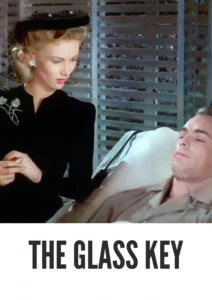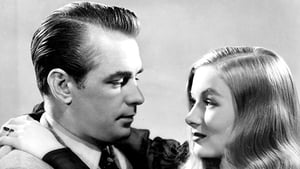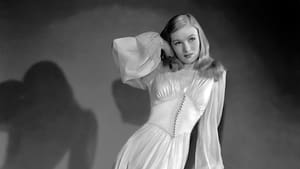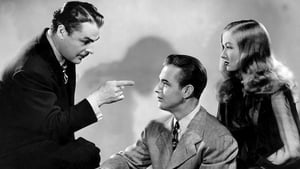Video Sources 0 Views
- Watch trailer
- The Glass Key 1942 Colorized


Synopsis
Table of Contents
ToggleDeception, Murder, and Political Intrigue: The Glass Key (1942) in Stunning Color

Step into the shadowy world of The Glass Key, a gripping film noir from 1942, now beautifully colorized for a mesmerizing viewing experience. Starring Alan Ladd and Veronica Lake, this stylish crime drama, also known as The Brasher Doubloon, delves into a web of political corruption, murder, and betrayal. Perfect for fans of classic noir and those who appreciate sharp storytelling, this HD download brings a timeless piece of cinematic history to your screen.
The Glass Key Storyline: A Web of Lies and Betrayal
The Glass Key follows Ed Beaumont (Alan Ladd), the trusted right-hand man of Paul Madvig (Brian Donlevy), a powerful political boss. When the son of a reformist senator is found murdered, Madvig becomes the prime suspect. Ed, convinced of his friend’s innocence, sets out to clear Madvig’s name and uncover the real killer.As Ed investigates, he finds himself entangled in a dangerous game of deception and betrayal. He navigates a complex web of lies, double-crosses, and hidden agendas, encountering a seductive socialite, Janet Henry (Veronica Lake), a ruthless gangster, and a host of corrupt officials. With the police closing in and enemies lurking at every turn, Ed must unravel the truth before he becomes the next victim. The Glass Key is a suspenseful and atmospheric thriller that explores themes of loyalty, corruption, and the dark underbelly of power.
Movie Cast
The film features a stellar cast of actors who bring this shadowy story to life:
- Alan Ladd as Ed Beaumont
- Veronica Lake as Janet Henry
- Brian Donlevy as Paul Madvig
- Bonita Granville as Opal Madvig
- Joseph Calleia as Nick Varna
Movie Genre
The Glass Key falls squarely into the genre of film noir, with elements of crime, mystery, and suspense. Its stylish visuals, shadowy atmosphere, and morally ambiguous characters are hallmarks of the genre.
Historical Context: Wartime Cinema and Noir Beginnings
Released in 1942, The Glass Key reflects the mood and anxieties of wartime America, with its themes of corruption, betrayal, and moral decay. The film is a significant early example of film noir, a genre that would become increasingly popular in the post-war years. While it is a remake of a 1935 film of the same name, this version is considered the superior adaptation, solidifying Alan Ladd’s status as a rising star and showcasing the iconic pairing of Ladd and Veronica Lake.
Colorization Details
This colorized version of The Glass Key has been meticulously restored using modern digital techniques, enhancing the visual impact while preserving the film’s original shadowy atmosphere. The colorization process involved carefully analyzing the grayscale tones of the original black and white footage and assigning appropriate colors to each scene. While the specific software used remains proprietary, the techniques employed included advanced algorithms for color palette selection and image enhancement. This painstaking process brings new life to the characters and settings, making the story even more engaging for modern audiences. While some may debate the merits of colorizing classic films, it introduces these films to a broader audience, ensuring their legacy for future generations.
Technical Details
- Director: Stuart Heisler
- Screenplay: Jonathan Latimer
- Based on: the novel by Dashiell Hammett
- Cinematography: Theodore Sparkuhl
- Edited by: Stuart Heisler
- Production Company: Paramount Pictures
- Distributed by: Paramount Pictures
- Runtime: 85 minutes
Technical Specifications
- Download Format: MP4
- Resolution: HD (1080p)
- Compatibility: Compatible with most devices, including smartphones, tablets, computers, and smart TVs.
Reviews and Critical Reception
The Glass Key (1942) is considered a classic of the film noir genre, praised for its sharp dialogue, stylish visuals, and compelling performances. Alan Ladd’s portrayal of Ed Beaumont is particularly memorable, and the film solidified his status as a leading man. As a stylish and suspenseful thriller, The Glass Key remains a must-see for fans of classic cinema.
FAQs
- Q: What is The Glass Key about?
- A: The Glass Key is a film noir about a political operative who investigates a murder to clear his boss’s name.
- Q: Is The Glass Key (1942) a well-known film noir?
- A: Yes, The Glass Key is a highly regarded example of film noir, known for its stylish visuals and compelling performances.
- Q: Is this version of The Glass Key colorized?
- A: Yes, this version has been professionally colorized to enhance the viewing experience.
- Q: What makes The Glass Key interesting for film noir fans?
- A: The Glass Key offers a classic example of the genre, with its shadowy atmosphere, morally ambiguous characters, and suspenseful plot.
- Q: What is the download format?
- A: The download format is MP4, which is compatible with most devices.
- Q: What resolution is the download?
- A: The resolution is HD (1080p), providing a high-quality viewing experience.
Download Now in HD!
Watch The Glass Key Today!















